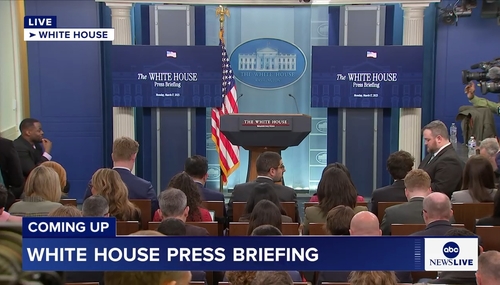As is so often the case with such stories, one can tell how favorable or disappointing a government report on the economy was by whether a story about it is still present at the Associated Press's "Top Business News" page several hours after its release.
Today's news from the Census Bureau on September's factory orders and shipments, released at 10 a.m., was extremely disappointing. Thus, it is utterly unsurprising that Martin Crutsinger's AP story covering that report was not at the "Top Business News" page a mere six hours after its release (it likely came off even earlier, as I didn't check the page until just after 4 p.m.). The AP economics writer's coverage, though bit of an improvement over prior months' efforts, still left important gaping holes.
The bureau reported that September factory orders fell by a seasonally adjusted 1.0 percent from August, slightly worse than expectations of -0.9 percent, while shipments fell by 0.4 percent. Far worse, August's original analogous figures of -1.7 percent and -0.7 percent were revised even further into negative territory to -2.1 percent and -0.9 percent, respectively.
Though he disclosed the August orders decline, Crutsinger didn't tell readers that it had been downwardly revised, and tried to pass off the problem as (implying entirely) the result of a strong dollar affecting exports. Finally, though he did note the steep decline in year-to-date orders compared to 2014, he inexplicably saved that distasteful morsel for his report's final sentence, and ignored the fact that seasonally adjusted year-over-year monthy orders and shipments have dropped for 11 straight months.
Here are several paragraphs from the AP reporter's writeup (bolds and numbered tags are mine):
US FACTORY ORDERS FELL AGAIN IN SEPTEMBER
Orders to U.S. factories fell in September for a second straight month, with a key category that tracks business spending plans also losing ground.
Factory orders dropped 1 percent in September following a 2.1 percent decline in August, [1] the Commerce Department reported Tuesday. A category that serves as a proxy for business investment spending slipped 0.1 percent.
... U.S. manufacturers have been squeezed this year as a strong dollar makes American products less competitive overseas. [2] Weak economies in China and other key foreign markets have also cut into exports.
... Economic growth as measured by the gross domestic product slowed to a moderate 1.5 percent rate in the July-September quarter following a 3.9 percent advance in the second quarter. Many economists are projecting GDP to accelerate to around 2.5 percent in the current October-December period, as strength in consumer spending offsets continued weakness in manufacturing. [3]
The Institute for Supply Management reported Monday that factory activity slowed in October to its slowest pace since May 2013.
A slowdown in China, the world's second-largest economy, has delivered a direct hit on construction equipment makers such as Caterpillar. [4] ...
... Through September, orders to U.S. factories are down 7.2 percent compared to the same period in 2014. [5]
Notes:
[1] — It wouldn't have been tough for Crutsinger to add the words "downwardly revised" to this sentence. He didn't. Considering the revision's size, he should have.
[2] — The statement is true, but pretending that the strong dollar is the only cause is questionable. U.S. consumer demand for U.S.-manufactured goods other than vehicles hasn't been all that strong, and vehicles are being financed largely with loans averaging 6-1/2 years. Much of the consumption increase in reported GDP has gone to "services," much of which has appeared in the "health care" line item — a likely indicator that those who have Obamacare plans or more restrictive employer health care coverage are having to dig into their own pockets to pay medical bills. If so, that hardly indicates the kind of increase in general standards of living that Gross Domestic Product is supposed to measure.
[3] — That 2.5 percent GDP growth estimate is already being revised downward by some observers. For example, on Monday the Atlanta branch of the Federal Reserve reduced its fourth-quarter GDP estimate to an annualized 1.9 percent from 2.5 percent. While we're on the topic of GDP, Crutsinger also failed to explore the potential impact of today's very weak data on the third quarter's already pathetic 1.5 percent preliminary result.
[4] — As seen at an October 21 Zero Hedge post, Caterpillar's sales decline is across the board, in every major geographic market, not just China. But since Crutsinger mentioned China, it's worth asking how Cat's sales to China can be cratering so deeply if the mainland's economy is still legitimately growing.
[5] — This chilling stat really shouldn't have waited until Crutsinger's final sentence. Additionally, year-to-date shipments are down by 4.1 percent. Though falling oil prices during the past year explain a large portion of the two declines, the fact remains that even after taking that qualifier into account, year-over-year orders and shipments are still down. This begs the following question: How can the economy be genuinely growing at even the weak 2.0 average rate seen so far this year (0.6 percent in the first quarter, 3.9 in the second and 1.5 in the third)?
Zero Hedge reacted to today's factory orders report by asking "Recession much?" If a Republican or conservative were in the White House, the AP's Crutsinger would be asking similar questions. We know this because he did so during the middle of the previous decade during the Bush administration, even though the underlying manufacturing data didn't become consistently weak until the latter part of 2007.
Cross-posted at BizzyBlog.com.




